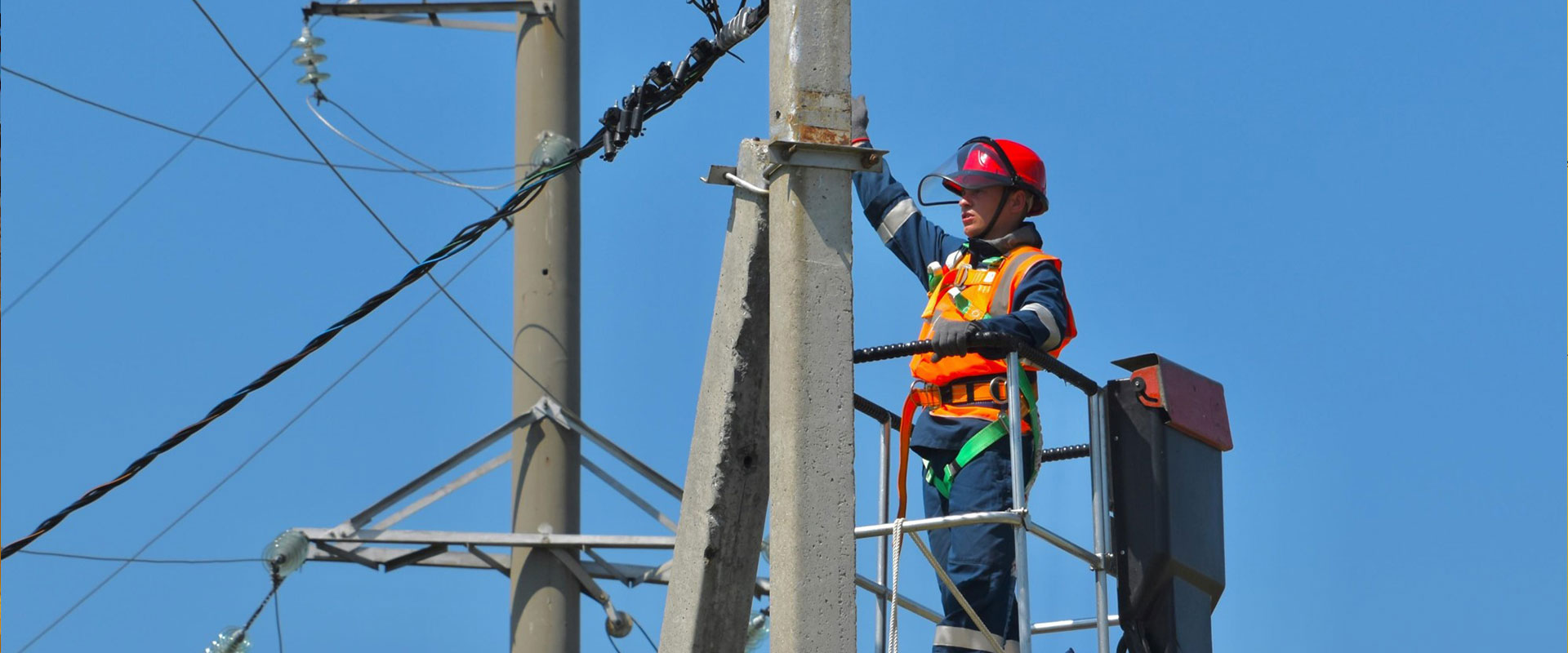In-Depth Insights into Policy, Regulations, and Court Rulings Shaping the India’s Energy & Infrastructure Horizon
APPEAL NUMBER: CIVIL APPEAL NOS. 8527-8529 OF 2009
APELLANT: M/S. DAKSHIN GUJARAT VIJ COMPANY LIMITED
RESPONDENTS: GAYATRI SHAKTI PAPER AND BOARD LIMITED AND ANOTHER, ETC.
with
• CIVIL APPEAL NOS. 1-2 OF 2010
• CIVIL APPEAL NOS. 1693-1698 OF 2010
• CIVIL APPEAL NO. 12282 OF 2016
• CIVIL APPEAL NO. 1142 OF 2022
• CIVIL APPEAL NO. 1141 OF 2022
• CIVIL APPEAL NOS. 4611-4624 OF 2022
• CIVIL APPEAL NOS. 4532-4556 OF 2022
• CIVIL APPEAL NO. 4571 OF 2022
• CIVIL APPEAL DIARY NO. 10378 OF 2022
• CIVIL APPEAL NO. 3662 OF 2022
• CIVIL APPEAL NO. 4233 OF 2022
and
• CIVIL APPEAL NO. 8738 OF 2022
Our aim is to deliver comprehensive insights that will aid our client's decision-making process and support their long-term goals in the waste management and facility management sectors, ensuring a successful and informed business journey.
What was the judgement about ?
Clarity vs. Challenge: Captive Power Industry Navigates New Landscape After Supreme Court Verdict
The Electricity Rules, 2005, established under the Electricity Act, 2003, have been a source of confusion due to conflicting interpretations by various electricity regulators, particularly concerning captive generating plants (CGP). Group captive power arrangements, involving a developer setting up a power plant and allocating at least 26% equity to large consumers in the commercial and industrial sector, have attracted attention due to cost advantages and exemptions from certain surcharges.
A recent landmark decision by a two-judge bench of the Supreme Court of India in DGVCL vs. Gayatri Shakti Papers and Board Limited (DGVCL Judgment) provides much-needed clarity on the interpretation of Rule 3 of the Rules.
Hon. Court’s Ruling
The ruling addresses key aspects:
1. Special Purpose Vehicle as an ‘Association of Persons’ (AoP): To qualify as a Captive Generating Plant (CGP), the Rules necessitate the fulfillment of a two-part examination. This involves captive users maintaining a minimum ownership of 26% (referred to as '26% Ownership') in the CGP and consuming no less than 51% of the electricity generated by the CGP (referred to as '51% Consumption'). The Rules additionally outline a specific eligibility criterion for captive users of a CGP established by an 'association of persons' (AoP). According to this criterion, the electricity consumption by captive users in a CGP must be proportional to the shares they hold, with a permissible variation not exceeding 10% ('Proportionality Requirement’).
• The Supreme Court (SC) deliberated on whether captive users of a Special Purpose Vehicle (SPV), a company exclusively formed for power generation, are obligated to adhere to the Proportionality Requirement. This consideration arises from previous rulings, such as Tamil Nadu Power Producers Association v. TN Electricity Regulatory Commission ('TN Power'), which deemed the Proportionality Requirement inapplicable to SPVs. In simpler terms, if a 1% shareholder consumes 50% of the electricity generated, and a 25% shareholder consumes only 1%, both would still qualify as captive consumers, commonly referred to as "gaming".
• The SC concluded that, under the Electricity Act 2003 (EA 2003), SPVs qualify as AoP. Consequently, captive users of a CGP owned by an SPV must comply with the 26% Ownership, 51% Consumption, and the Proportionality Requirement. The SC reasoned that an AoP involves two or more individuals joining with a common purpose to achieve mutual benefits. In the context of the EA 2003 and the Rules, corporate entities may collaborate to establish an SPV with a shared objective of attaining the advantages of becoming captive users and enjoying the economic benefits provided to such users.
2. 26% Ownership Requirement Throughout the Financial Year: The requirement for 26% ownership must be consistently met throughout the relevant financial year, as outlined by the Appellate Tribunal for Electricity (APTEL). In the case of TN Power, APTEL asserted that captive users collectively need to fulfill the 26% ownership requirement by the conclusion of the financial year. In other words, even if captive users temporarily fall below the 26% ownership threshold during the financial year, they would still pass the ownership test as long as their combined ownership at the end of the financial year is not less than 26%.
• However, the Supreme Court (SC) disagreed with APTEL's ruling. The SC maintained that the 26% ownership requirement should be collectively satisfied by captive users throughout the entire relevant financial year, not just at its conclusion. Therefore, according to the SC's perspective, meeting the 26% ownership criterion is an ongoing obligation that must be adhered to consistently throughout the financial year, challenging the notion that compliance can be achieved solely at the year's end.
3. 51% Consumption Test: The Rules do not provide adequate guidance on how annual power consumption should be analysed to examine compliance with the qualification requirements. It is in this context that the judgment of the SC is most helpful.
• The SC has laid out that every user of a CGP set up by an SPV will qualify to be a captive user if (i). such user annually consumes at least 1.96% (+/-10%) of power produced for each 1% of ownership of such user in the SPV (‘1.96 Test’); and (ii). all such users which meet the test (i) collectively meet the 26% Ownership requirement and also the 51% Consumption requirement. All such users who do not meet the 1.96 Test will not qualify to be captive users. Further, all power consumption by captive users (i.e., users which have satisfied the tests in (i) and (ii) above), even beyond the 1.96 Test, will qualify to be captive power. Importantly, ‘gaming’ has been clamped down.
4. Change of Ownership of CGP and Weighted Average: An area impacting the group captive industry involved a lack of clear regulations regarding the impact of changes in the shareholding of a Special Purpose Vehicle (SPV) within a financial year. The SC has determined that in the event of a change in the SPV's shareholding, the effective shareholding for the financial year (essential for assessing compliance with the 51% consumption requirement and Proportionality Requirement) should be calculated as a weighted average. Additionally, the SC stipulated that if a captive user exits during a financial year, transferring its shareholding to a new captive user, the new user should be obligated to consume electricity in proportion to its shareholding. This ensures the simultaneous maintenance of both the 26% ownership and 51% consumption requirements for the entirety of the financial year.
Eninrac’s Impact Analysis
1. SPVs as “Association of Persons”
Impact: This clarification brings greater clarity and consistency to the application of Rule 3 and prevents potential misuse of SPVs for "gaming” the system.
Analysis: The court's reasoning, emphasizing the common purpose and benefit achieved through an SPV, strengthens the intent of the Electricity Act to incentivize genuine captive consumption, not mere financial manipulations.
Potential Issues: Some C&I consumers may argue that applying the Proportionality Requirement to SPVs may discourage their formation due to increased compliance complexities.
2. 26% Ownership Requirement
Impact:This stricter interpretation closes loopholes and ensures continuous adherence to the minimum ownership criterion throughout the year.
Analysis: The ruling promotes responsible investment and prevents temporary dips in ownership from undermining the captive status of the CGP.
Potential Issues: Increased scrutiny may make entry and exit from group captive arrangements more challenging, requiring careful planning and potential recapitalization needs.
3. 51% Consumption Requirement Analysis
Impact: The 1.96 Test introduces a clearer and more granular benchmark for individual user consumption, effectively curbing "gaming" practices.
Analysis: This approach provides certainty for regulators and encourages balanced utilization of the generated power among captive users.
Potential Issues: Mid-year entry or exit of captive users might present practical challenges in meeting the average consumption requirement across the entire year.
4. Effect of Change in CGP Ownership
Impact: The weighted average approach and proportionate consumption obligation for new users ensure smooth transitions and maintain compliance throughout the year.
Analysis: This provision promotes responsible entry and exit, preventing disruptions and ensuring continued viability of the group captive arrangement.
Potential Issues:New users entering mid-year might bear the burden of under-consumption by previous users, leading to potential liabilities and requiring careful contractual arrangements.
Overall, the DGVCL judgment brings much-needed clarity and strengthens the regulatory framework for group captive power arrangements in India. While some practical challenges may arise, the long-term benefits of promoting responsible participation, preventing misuse, and ensuring efficient power utilization are likely to outweigh the initial adjustments.
Reference Cases:
1. Kadodara Power Pvt. Ltd. & Ors. vs. Gujarat Electricity Regulatory Commission & Anr., [2009] APTEL 119; and Tamil Nadu Power Producers Association vs. TN Electricity Regulatory Commission, 2021 SCC OnLine APTEL 19.
2. Dakshin Gujarat Vij Co. Ltd. v. Gayatri Shakti Paper & Board Ltd., 2023 SCC OnLine SC 1276 dated October 9, 2023.
3. Tamil Nadu Power Producers Association vs. TN Electricity Regulatory Commission, 2021 SCC OnLine APTEL 19.
Source: Hon'ble Supreme Court of India, AZB & Partners, Eninrac Research & Analysis






